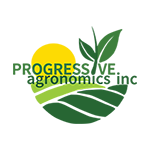Some years, we look back and wish we could have planted all our crops within a specific window of time. Typically, that window is from mid- to late- April. According to Beck’s 17-year Indiana Practical Farm Research (PFR)® planting date data, you can gain anywhere from 4% to 28% more yield by planting in late April compared to May or June. On average, for a 175 Bu./A. corn crop, that could mean a 20 to 30 Bu./A. gain just by planting within that early window. What if you could plant 60% more acres per hour? What would that mean for your operation?
With Precision Planting’s SpeedTube® or John Deere’s Exact Emerge™ high-speed planters, you can do just that. If you have a 16-row planter operating at 5 mph and you increase that speed to 8 mph, you can plant roughly 60% more acres per hour. Of course, this will depend on your average field size and ground conditions. Hydraulic downforce is also something you must have in order to maintain a good ride at high planting speeds.
It is possible to maintain good singulation and spacing when planting about 5 mph? This is the most common question we receive regarding our High-Speed Planting study in PFR. According to our spacing evaluations from three different locations, the average shows that yes, we absolutely can. In 2019, we used Precision Plantin’s SpeedTube within our PFR research with a standard seed tube at 5 mph as our control. We then switched to SpeedTube and evaluated 5, 7.5, 10, and 12.5 mph. You can see that within all treatments, we were within 0.20 in. seed spacing with a standard deviation below 2.0 in. The final verdict will be based around our yield data that will be collected later this fall.
Another factor to consider with high speed planting is being able to better singulate and space soybeans. Seed is delivered to the ground at the same speed that the planter is moving, so it has less chance to roll or be “out of place” compared to dropping down a seed tube. New for 2019, we are also conducting singulation studies to evaluate the potential yield difference between singulated and nonsingulated soybean stands. These trials are being conducted in 10, 15, and 30 in. rows at three different planting populations.
Closing wheel selection is also something that needs to be re-evaluated if you will be planting over 6 mph. We have multi-year closing wheel deal, but it has all been conducted at 5 mph. In response, we decided to add a High Speed Closing Wheel Study this year. With this study we are evaluating three different aftermarket closing wheel combinations against our control of two solid rubber wheels at 7.5 mph and 10 mph. We have a chart that shows the 24-hour emergence average of this three-location study. The Schaffert 4 Link Closer™ and Schaffert Mohawk wheels performed the best when evaluating for uniformity of emergence. Overall, all three aftermarket combinations produced a higher, final emerged population when compared to the two solid rubber closing wheels. It will be interested to see if the yield results correlate with our 24-hour emergence results.
~Jason Gahimer – PFR Operations Manager
